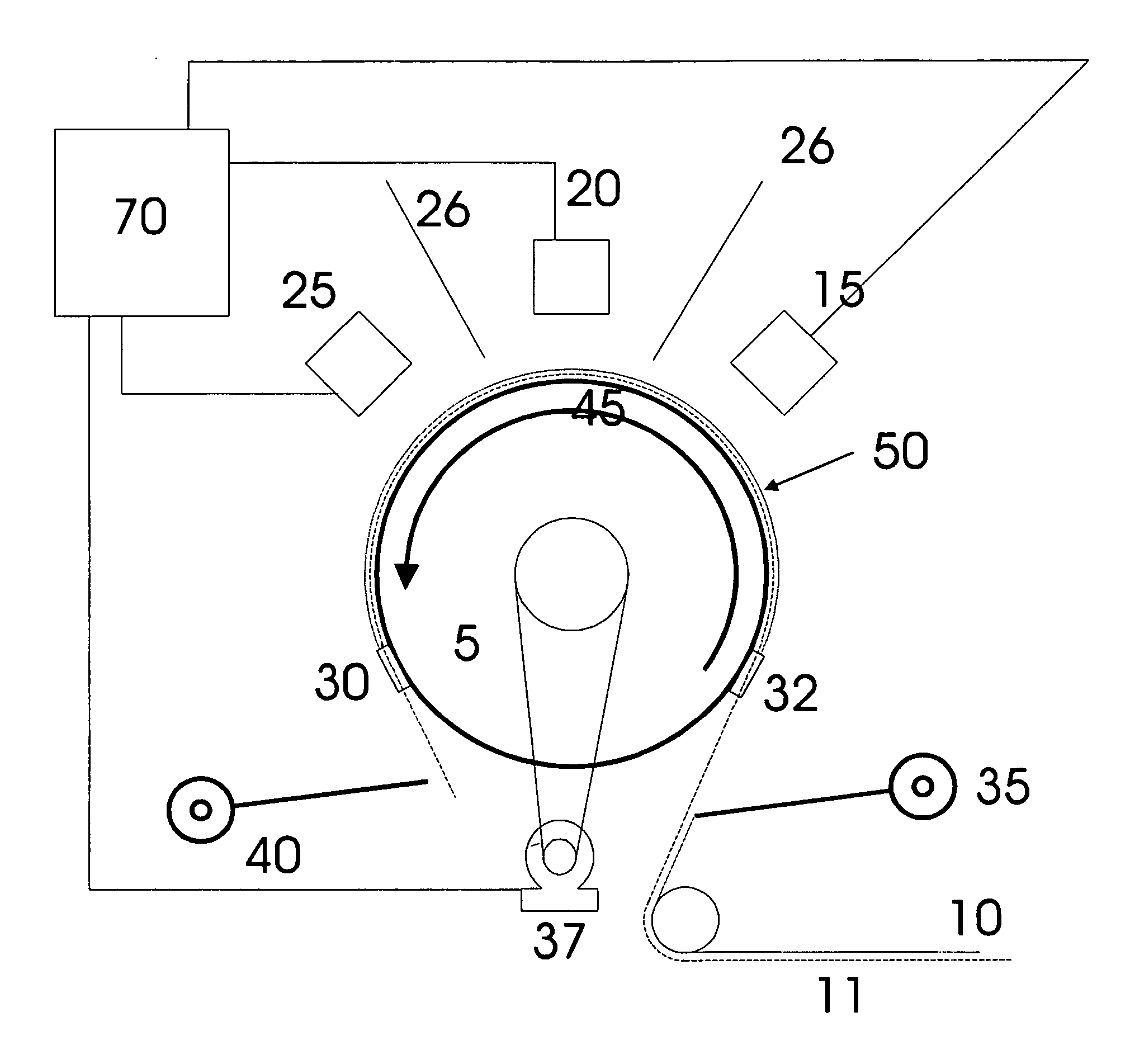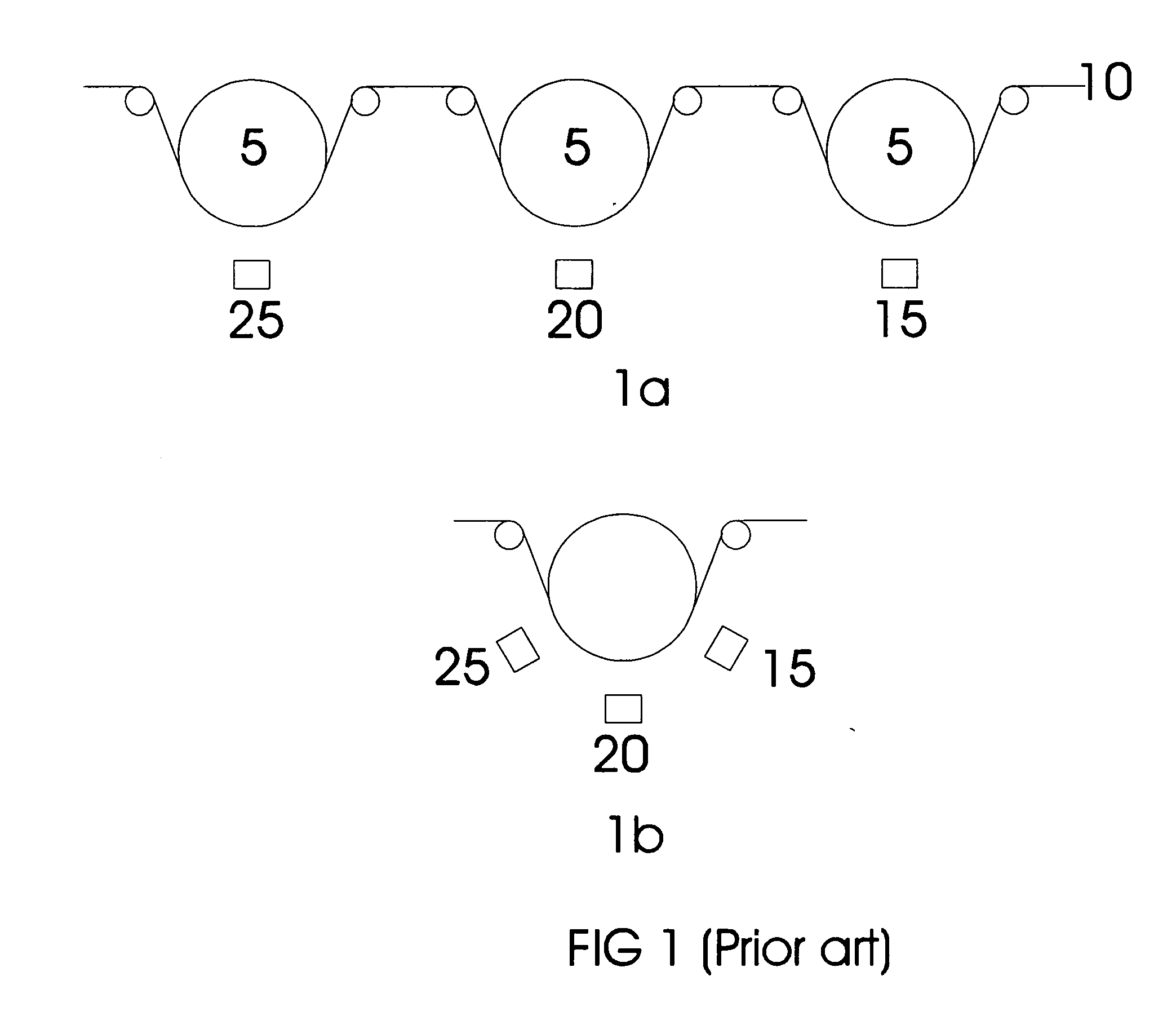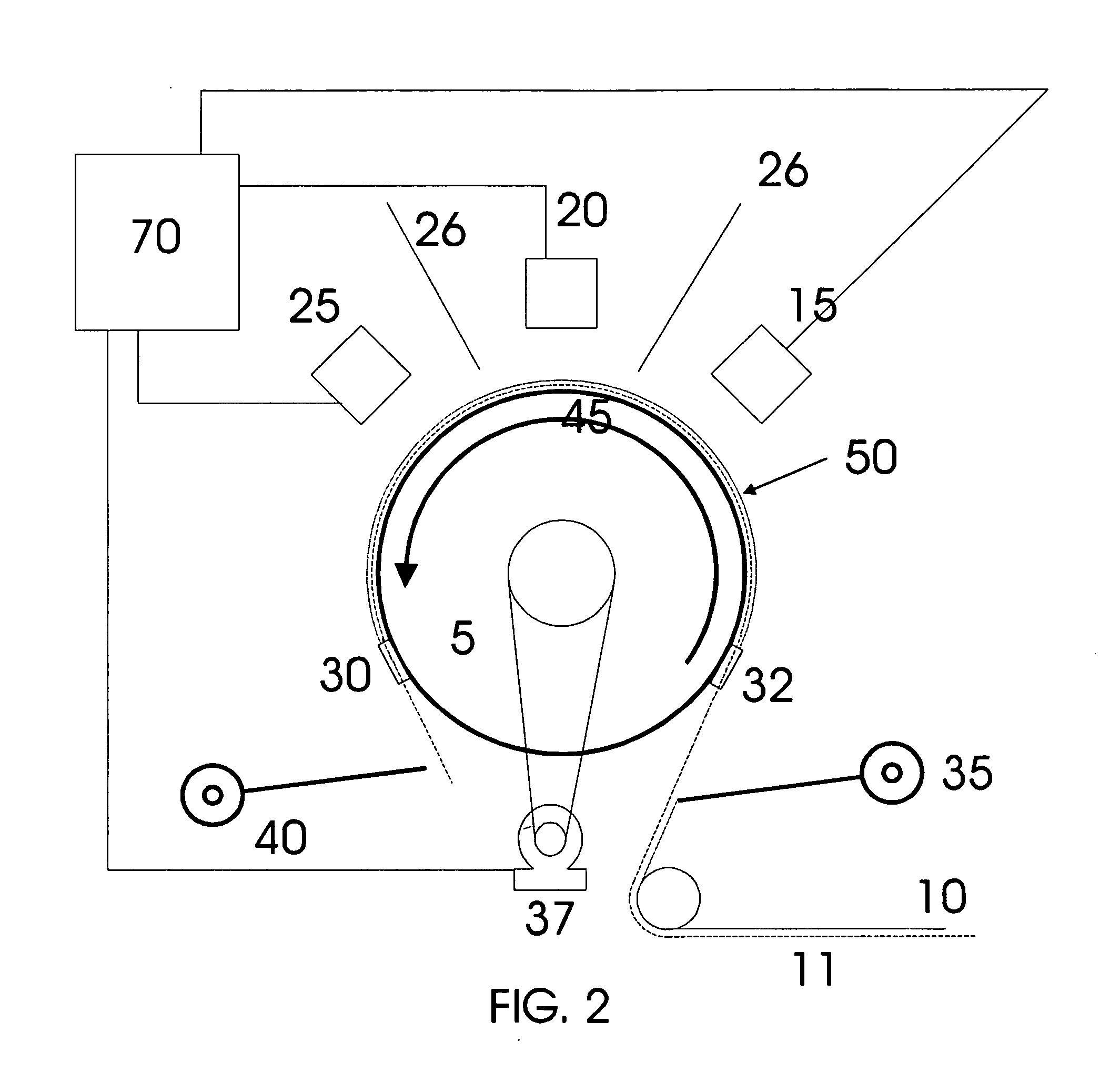Producing repetitive coatings on a flexible substrate
a flexible substrate and repetitive technology, applied in the direction of photomechanical equipment, manufacturing tools, instruments, etc., can solve the problems of high production cost, initial capital and on-going operational cost, and difficult to replicate the source, so as to achieve efficient deposition of materials and effective production of stacked oled devices
- Summary
- Abstract
- Description
- Claims
- Application Information
AI Technical Summary
Benefits of technology
Problems solved by technology
Method used
Image
Examples
Embodiment Construction
[0020] A number of systems have been proposed for the web production of OLEDs. These systems are quite similar to those used for coating webs for other purposes, such as metallizing plastic films for food containers such as potato chip bags.
[0021] Referring to FIG. 1A, prior art systems typically include a coating drum 5 around which a flexible substrate 10 is wrapped. A source 15 is located at a distance from the surface of the drum, where the distance is determined by the nature of the deposition process and operating characteristics of the source. As shown in U.S. Pat. No. 6,579,422, for each additional source 20 and 25, an additional coating drum is added to the system. For the three-layer sequence (HTL-EL-ETL), three coating drums are required for each additional grouping on the stacked device. FIG. 1B depicts a prior art arrangement having multiple sources 15, 20, and 25 around a single coating drum. This introduces challenges in balancing deposition rates and guarding agains...
PUM
| Property | Measurement | Unit |
|---|---|---|
| skew angle | aaaaa | aaaaa |
| flexible | aaaaa | aaaaa |
| structure | aaaaa | aaaaa |
Abstract
Description
Claims
Application Information
 Login to View More
Login to View More - R&D
- Intellectual Property
- Life Sciences
- Materials
- Tech Scout
- Unparalleled Data Quality
- Higher Quality Content
- 60% Fewer Hallucinations
Browse by: Latest US Patents, China's latest patents, Technical Efficacy Thesaurus, Application Domain, Technology Topic, Popular Technical Reports.
© 2025 PatSnap. All rights reserved.Legal|Privacy policy|Modern Slavery Act Transparency Statement|Sitemap|About US| Contact US: help@patsnap.com



